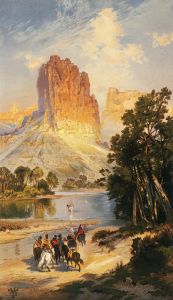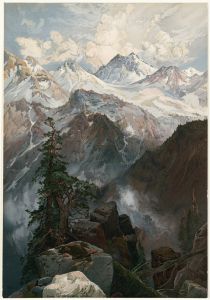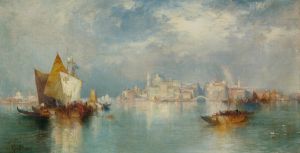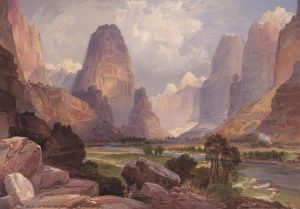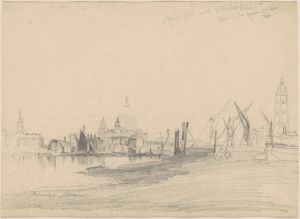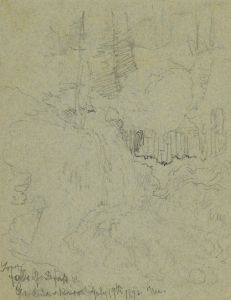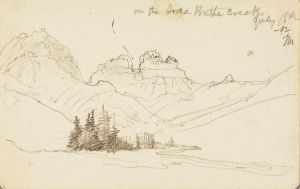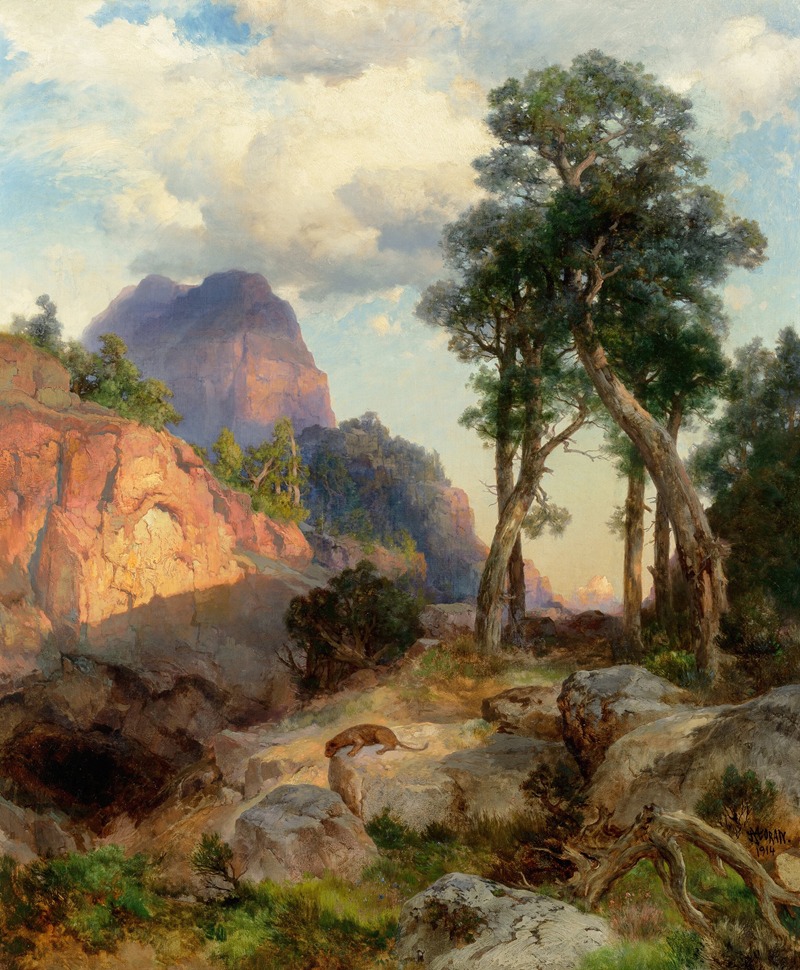
Mountain Lion in Grand Canyon
A hand-painted replica of Thomas Moran’s masterpiece Mountain Lion in Grand Canyon, meticulously crafted by professional artists to capture the true essence of the original. Each piece is created with museum-quality canvas and rare mineral pigments, carefully painted by experienced artists with delicate brushstrokes and rich, layered colors to perfectly recreate the texture of the original artwork. Unlike machine-printed reproductions, this hand-painted version brings the painting to life, infused with the artist’s emotions and skill in every stroke. Whether for personal collection or home decoration, it instantly elevates the artistic atmosphere of any space.
"Mountain Lion in Grand Canyon" is a painting by the renowned American artist Thomas Moran, who is celebrated for his dramatic landscapes of the American West. Moran was a pivotal figure in the Hudson River School, a mid-19th century American art movement characterized by its realistic and detailed portrayal of nature, often imbued with romanticism.
Thomas Moran was born in 1837 in Bolton, England, and emigrated to the United States with his family as a child. He began his artistic career as an apprentice to a wood-engraver in Philadelphia, but soon transitioned to painting, inspired by the works of J.M.W. Turner, the British landscape painter. Moran's fascination with the American West was sparked by his participation in the 1871 Hayden Geological Survey of the Yellowstone region, which led to his famous depictions of Yellowstone and the Grand Canyon.
The painting "Mountain Lion in Grand Canyon" exemplifies Moran's ability to capture the grandeur and sublime beauty of the American landscape. Although specific details about the creation date and current location of this painting are not widely documented, it is consistent with Moran's broader body of work, which often features dramatic vistas and a keen attention to natural detail.
In this painting, Moran depicts a mountain lion, also known as a cougar or puma, poised majestically against the backdrop of the Grand Canyon. The choice of subject reflects Moran's interest in the untamed wilderness of the West, as well as the wildlife that inhabits it. The Grand Canyon, with its vast, rugged landscape and intricate play of light and shadow, provides a dramatic setting that highlights Moran's skill in rendering both the vastness of the canyon and the solitary presence of the mountain lion.
Moran's work played a significant role in shaping public perception of the American West during the late 19th and early 20th centuries. His paintings were instrumental in the establishment of national parks, as they captured the imagination of the public and policymakers alike, emphasizing the need to preserve these natural wonders. The vivid colors and dynamic compositions of Moran's landscapes helped convey the awe-inspiring beauty of these regions, contributing to the burgeoning conservation movement of the time.
"Mountain Lion in Grand Canyon" is a testament to Moran's mastery of landscape painting and his ability to evoke the spirit of the American wilderness. His work continues to be celebrated for its artistic merit and historical significance, offering viewers a glimpse into the natural beauty and grandeur of the American West as it was perceived during his lifetime. Moran's legacy endures through his paintings, which remain influential in both the art world and the broader cultural understanding of America's natural landscapes.





